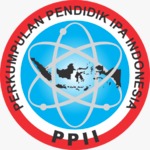Pengukuran Intensitas Bunyi Pada Bar Sinta Pub Maumere
DOI:
https://doi.org/10.29408/kpj.v6i1.5726Keywords:
measurement, sound intensity, barAbstract
Tapes, radio, laudspeakers, TV, and VCDs are all sources of organized and controlled sound. However, if this regular and controlled sound emits a sound that exceeds the desired sound level threshold and declared as noise that causes disturbances to human health, especially the sense of hearing. Hearing apparatus, namely the ear functions as a phonoreceptor capable of responding to sounds in the range 0 - 75 dB without causing pain. The frequency to which the human ear can respond is between 20 - 20,000 Hz and is very sensitive to frequencies between 1000 Hz - 4000 Hz. This study aims to determine how much the measured sound intensity level of the music sound at the Sinta Pub Maumere Bar and determine the degree of music sound intensity level at the Sinta Pub Maumere Bar at the measuring point of the sound source. This research was conducted at the Sinta Pub Maumere Bar using observation and experimental methods. The results showed the measured level of music sound intensity ranged from 103.12 dB. The highest level of sound produced is 110.6 dB and the lowest music sound intensity level produced is 92.4 dB. Based on the measurement results, the music sound intensity level at the Sinta Pub Maumere Bar has a different value. This shows that there is a difference measuring levelat the position of the distance from the sound source to the intensity level of the resulting music sound.
References
Boimau, I., Irmawanto, R. and Taneo, M. . (2019). Rancang Bangun Alat Ukur Laju Bunyi di Udara Menggunakan Sensor Ultrasonik Berbasis Arduino. Cyclotron, 2(2), 1–7.
Giancoli, D. C. (2014). Fisika: Prinsip dan Aplikasi Edisi ke 7 Jilid 1 (7th ed.). Erlangga.
Halliday,D. Dan Resnick, R. (1990). Fisika Jilid 1, Edisi ke-3 (Terjemahan Pantur Silaban dan Erwin Sucipto) (3rd ed.). Erlangga.
Hikmawati, H., & Suastra, I. W. (2021). Respon Mahasiswa Terhadap Perkuliahan Berbasis Kearifan lokal Pada Mata Kuliah Kajian Fisika Sekolah Menengah. Kappa Journal, 5(2), 191–199. https://doi.org/10.29408/kpj.v5i2.4605
Kallesta, K.S. and Erfan, M. (2018). Analisis Faktor Penyebab Kesulitan Belajar IPA Fisika pada Materi Bunyi. Quark Jurnal Inovasi Pembelajaran Fisika Dan Teknologi, 1(1), 51–57.
Krisnanti, K.E. and Sulistyorini, L. (2020). The Potential Risk of Hearing Loss on Noise Exposed Housewives: An Observational Study at Sukosari Madiun Railway Residentia. Jurnal Kesehatan Lingkungan, 1(12), 10–20.
Prabowo, D.Y.A.B., Suparno, S. and Sumadyo, A. (2015). Solo Music dengan Penerapan Sistem Akustik. Arsitektura, 1(13), 1–8. https://doi.org/https://doi.org/10.20961/arst.v13i1.15578
Pristianto, H and Suci, N. . (2017). Analisa Tingkat Kebisingan Lalu Luntas di Jalan Basuki Rahmat Kota Sorong. Jurnal Rancang Bangun, 1(3), 1–6.
Sears and Zemansky. (2002). Fisika Untuk Universitas. Erlangga.
Supriyanto, A. (2015). Pengaruh Bunyi Terhadap Ruangan. Jurnal Teknik Sipil, 1(8), 1–5.
Syuhada, A. (2021). Pengaruh Model Predict-Observe-Explain (POE) Berbasis Multimedia Interaktif terhadap Hasil Belajar Peserta Didik pada Konsep Gelombang Bunyi. UIN Syarif Hidayatullah Jakata.
Wijaya, N. (2019). Kajian Tingkat Kebisingan Pertambangan yang Diterima pemukiman sekitar Tambang di Kabupaten Magelang, Jawa Tengah. Prosiding Internasional Rekayasa Teknologi Industri Dan Informasi ReTII.









